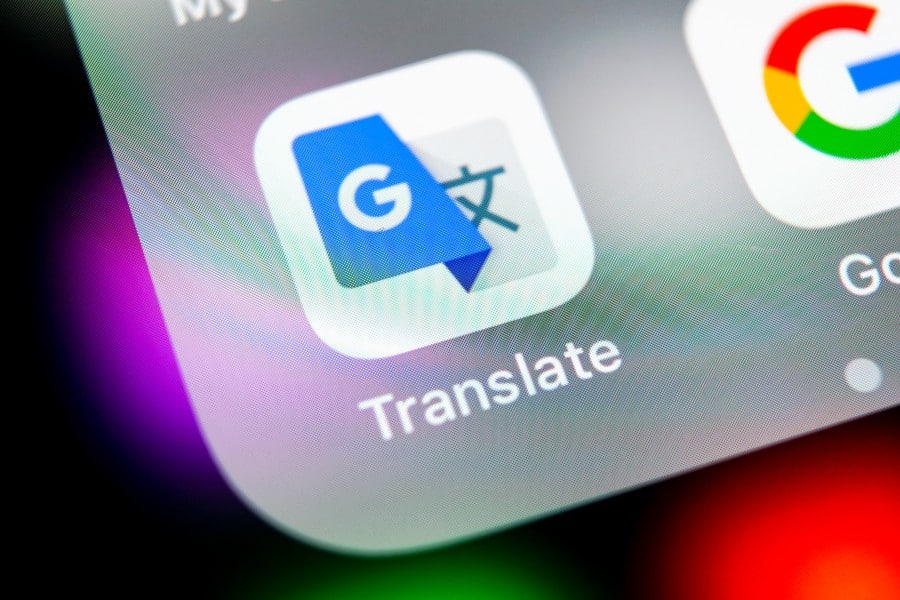Translating a website built on Drupal, one of the most used Content Management Systems behind WordPress, is possible! Indeed, innovations in this field are constantly simplifying the creation of a multilingual website. But this isn’t the only advance in the industry. You’ve probably used Google Translate to transform a text into another language that’s readable for you. But, did you know that you can also use it to translate all the pages of an entire site? Find out how to translate a website with Google Translate and the advantages and disadvantages of adopting this automatic translation tool as a professional.
Translating a website into several languages: a how-to guide for Google Translate
How to translate a website with Google Translate
Using Google Translate to translate an entire website is simple. You don’t even need to create a Google account: this feature is available to all Internet users.
Here are the 5 steps to follow:
- Type the address of Google Translate in your browser, i.e. https://translate.google.com.
- Select the target language, e.g. French: this is the language into which you want the site to be translated. In general, the source language (used on the site) is automatically detected. If not, select it, too, or click on the “detect language” button.
- Copy the address of the site (URL) you want to translate into the field on the left. Automatically, the same address appears in the right field with a redirection link.
- Click on this link.
- You don’t have to do anything else! The translated web page opens in a new tab. You can browse all pages of the site. They will be offered in the chosen target language.
Note: translating a website with Google Translate is only possible on the desktop version of your PC. This functionality is not available on the mobile app.
How do I translate a website with Google Chrome?
The good news is that with Google Chrome, translating a website is even easier!
Indeed, like Microsoft Edge, this browser is directly equipped with the ability to translate web pages into another language. This can be done from a computer as well as from a mobile phone.
Here is how to automatically translate a web page in Google Chrome.
- Simply open the Google Chrome browser and click on the URL of the web page written in another language.
- Once the page is open, right click and select “Translate to English”.
- No further steps are necessary! The page’s content will be displayed in English.
Note: Google Chrome makes it possible to automatically and systematically translate a web page written in a foreign language!
To do this, once the browser is open, click on the three vertical dots in the top right. From the drop-down menu, select “Settings”.
In the window on the right, click on “Advanced settings” and select “Languages”.
From this submenu you can customize the options: “always translate web pages written in a language I don’t know”, “add languages”, etc.
Translating a website with Google Translate: 3 key benefits
Once you’ve tested it, you’ll understand, translating a web page, or even an entire site, with Google Translate has 3 main advantages.
It’s:
- Simple. You don’t need to degree in information technologies!
- Fast. With a single click (or almost), the website is automatically translated.
- Free of charge. No need to allocate a budget for this!
The limitations of Google Translation for professional use
Translating a web page with Google Translate is a good option in some situations. For example, you visit the website of a Spanish supplier to find out about their offer (products/services) before contacting them for more details.
It’s a valuable aid to get a general understanding of foreign content for your daily business.
On the other hand, in other cases this solution can be unsuitable or even detrimental to the company, particularly if you apply it to your international communication on the Internet.
Despite constant improvements in machine translation, this tool is not able to provide translations on par with those provided by a professional translator.
Real risks for the company
With Google Translate, the translation of the site is:
- Not qualitative. It is a word-for-word translation and is approximate in terms of syntax, grammar, spelling, typography and semantics.
- Partial. Only textual content is translated. Thus, images, infographics, diagrams, CTA (Call-To-Action) buttons remain in the original language.
- Not optimized. For example, the keywords are translated literally, without any research or optimisation work according to the language specificities and the queries typed by Internet users in the target countries. Say goodbye to all your SEO efforts in the source version!
The risks to your business are substantial. You will lose:
- Credibility with your potential customers.
- Sales opportunities and therefore turnover. Lack of optimisation leads to poor visibility on the SERP (search engine results pages). Untranslated content creates a poor user experience (UX).
- Time. Instead of devoting your energy to your core business, you will be busy making corrections (errors, omissions, etc.).
The solution for professional web translation
There is a solution: entrust this task to a specialized translation agency.
They will ensure professional, native translators, who are experts in web translation, care for your project. They combine:
- Strong language skills enabling them to localize your content (adapt it to the target audience) and make it more impactful.
- Expertise in natural referencing that will help you place higher in the results of international search engines.
Thanks to innovative tools the agency can offer simplified project management and attractive rates adapted to your requirements.
Translating a website with Google Translate is a simple, fast and free solution for consulting content written in another language. But when it comes to translating your entire website for your potential customers, there is no substitute for a team of professional translators. Your international web presence depends on the quality of the translation and its optimisation.

